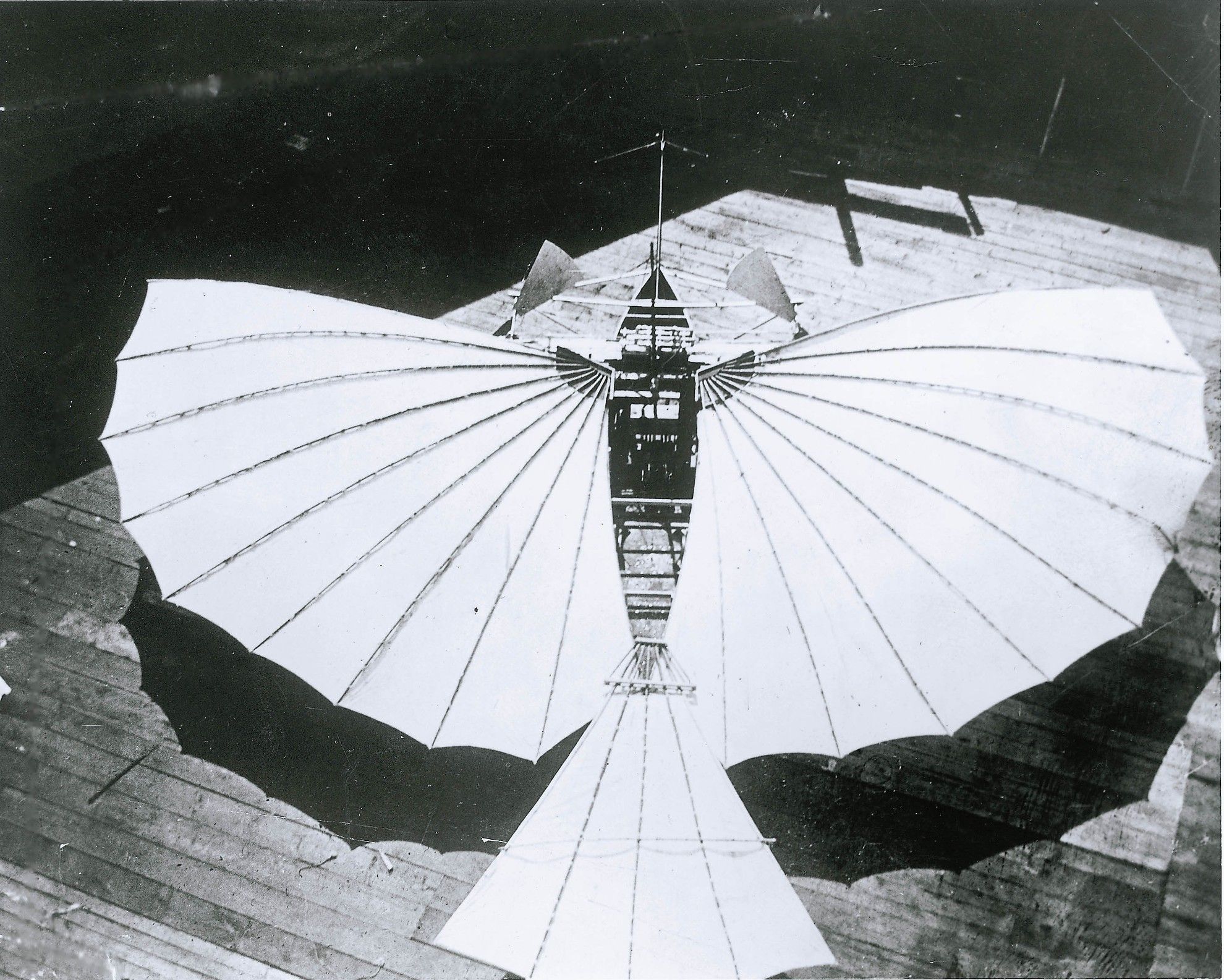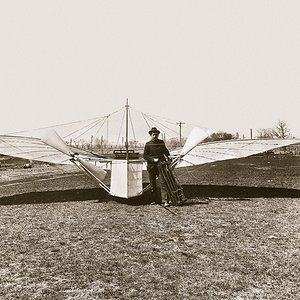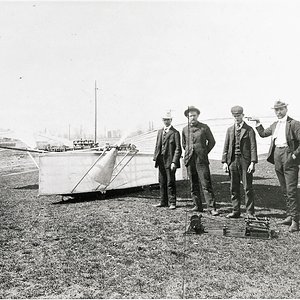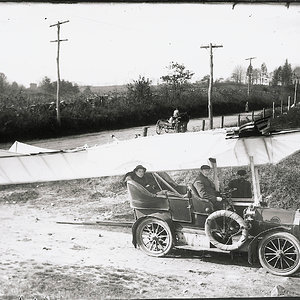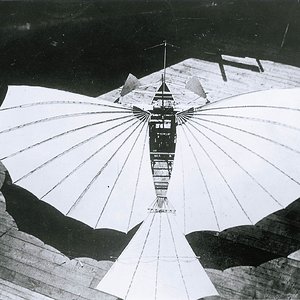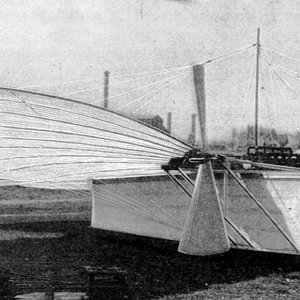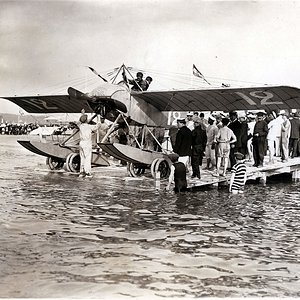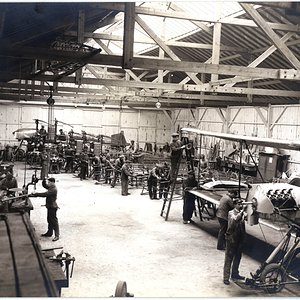Navigation
Install the app
How to install the app on iOS
Follow along with the video below to see how to install our site as a web app on your home screen.
Note: This feature may not be available in some browsers.
More options
You are using an out of date browser. It may not display this or other websites correctly.
You should upgrade or use an alternative browser.
You should upgrade or use an alternative browser.
The new name in town is Gustave Whitehead, a German-born inventor many have long believed took to the air more than two years before Orville and Wilbur even left the ground at Kitty Hawk on December 17, 1903.
But while new research from an Australian aviation expert convinced Jane's editors it was time to update the books, the Smithsonian National Air and Space Museum in Washington, D.C.—home to the original Wright Flyer—remains skeptical about Whitehead's work, which it views as mostly myth. The Aeronautics Division's senior curator—author and Wright expert Dr. Tom Crouch—believes Jane's was "hoodwinked."
Still, longtime Whitehead supporters are elated about the latest development. Many think the Smithsonian's indebtedness to the Wrights' legacy—which it even holds in contract with the brothers' heirs—prevents the institution from acknowledging the indisputable facts of Whitehead's pioneering work.
John Brown's Research
John Brown, an Australian flight historian, was responsible for swaying Jane's. Ironically, it was while researching a documentary on "flying cars" for the Smithsonian Channel—and working directly with Crouch—that Brown came across a large amount of previously overlooked data on Whitehead.
"There were a huge number of discoveries," Brown said, including newspaper accounts stating that Whitehead may have been flying as early as 1897—six years before the Wright brothers. "The history of Whitehead needs to be completely rewritten," Brown asserted.
He also believes that photographic enhancements confirm that a long-missing picture of Whitehead actually flying his plane in Fairfield, Connecticut, on August 14, 1901—a lithograph of which was published at that time in the Bridgeport Herald—can be seen on the wall of an aviation exhibit in a 1906 photo taken by William Hammer.
That photo is, in fact, part of the Smithsonian's Hammer Collection archives. Brown said he was denied access to it. But he enhanced a print of it he discovered at the Aviation Pioneer Gustav Weisskopf Museum in the aviator's hometown of Leutershausen, Germany (where Whitehead was born Gustav Weisskopf).
"It's a very simple open-and-shut case, really," said Brown, who's currently in Germany preparing a documentary on the life of Whitehead.
"The issue is: Did Gustave Whitehead fly or didn't he fly? Did he have the means? Did he have the motive?"
Brown calls it "indisputable," based on the man's professional background in aeronautics, the documented evidence of the number of airplane motors Whitehead created and sold, affidavits signed by eyewitnesses who saw him fly, newspaper accounts, and more.
But while new research from an Australian aviation expert convinced Jane's editors it was time to update the books, the Smithsonian National Air and Space Museum in Washington, D.C.—home to the original Wright Flyer—remains skeptical about Whitehead's work, which it views as mostly myth. The Aeronautics Division's senior curator—author and Wright expert Dr. Tom Crouch—believes Jane's was "hoodwinked."
Still, longtime Whitehead supporters are elated about the latest development. Many think the Smithsonian's indebtedness to the Wrights' legacy—which it even holds in contract with the brothers' heirs—prevents the institution from acknowledging the indisputable facts of Whitehead's pioneering work.
John Brown's Research
John Brown, an Australian flight historian, was responsible for swaying Jane's. Ironically, it was while researching a documentary on "flying cars" for the Smithsonian Channel—and working directly with Crouch—that Brown came across a large amount of previously overlooked data on Whitehead.
"There were a huge number of discoveries," Brown said, including newspaper accounts stating that Whitehead may have been flying as early as 1897—six years before the Wright brothers. "The history of Whitehead needs to be completely rewritten," Brown asserted.
He also believes that photographic enhancements confirm that a long-missing picture of Whitehead actually flying his plane in Fairfield, Connecticut, on August 14, 1901—a lithograph of which was published at that time in the Bridgeport Herald—can be seen on the wall of an aviation exhibit in a 1906 photo taken by William Hammer.
That photo is, in fact, part of the Smithsonian's Hammer Collection archives. Brown said he was denied access to it. But he enhanced a print of it he discovered at the Aviation Pioneer Gustav Weisskopf Museum in the aviator's hometown of Leutershausen, Germany (where Whitehead was born Gustav Weisskopf).
"It's a very simple open-and-shut case, really," said Brown, who's currently in Germany preparing a documentary on the life of Whitehead.
"The issue is: Did Gustave Whitehead fly or didn't he fly? Did he have the means? Did he have the motive?"
Brown calls it "indisputable," based on the man's professional background in aeronautics, the documented evidence of the number of airplane motors Whitehead created and sold, affidavits signed by eyewitnesses who saw him fly, newspaper accounts, and more.

